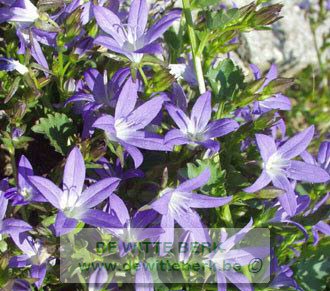Categorieen
- abelia
- acer
- amelanchier
- aronia
- buddleja
- callicarpa
- calycanthus
- camellia
- caragana
- carpinus
- caryopteris
- catalpa
- ceanothus
- cephalanthus
- cercis
- choisya
- clethra
- cornus
- corylopsis
- corylus
- cotinus
- cotoneaster
- crataegus
- deutzia
- diervilla
- edgeworthia
- elaeagnus
- eucalyptus
- euonymus
- exochorda
- fagus
- fatsia
- forsythia
- fothergilla
- fuchsia
- gleditsia
- hamamelis
- hedera
- heptacodium
- hibiscus
- hydrangea
- hypericum
- itea
- kolkwitzia
- leucothoe
- ligustrum
- liquidambar
- liriodendron
- lonicera
- loropetalum
- magnolia
- mahonia
- malus
- morus
- nandina
- nerium
- osmanthus
- parrotia
- perovskia
- philadelphus
- photinia
- physocarpus
- pieris
- pittosporum
- platanus
- potentilla
- prunus
- pyrus
- rhus
- ribes
- salix
- sambucus
- sarcococca
- skimmia
- sorbaria
- spiraea
- stephanandra
- stewartia
- styrax
- syringa
- tamarix
- tetrapanax
- tilia
- viburnum
- weigela
- acaena
- acanthus
- achillea
- agapanthus
- agastache
- ajuga
- alchemilla
- allium
- alyssum
- amsonia
- anaphalis
- anchusa
- anemone
- antennaria
- artemisia
- aruncus
- aster
- astilbe
- aubrieta
- bergenia
- brunnera
- calamintha
- campanula
- centaurea
- centranthus
- ceratostigma
- chelone
- chrysanthemum
- cimicifuga
- coreopsis
- crocosmia
- darmera
- delphinium
- dianthus
- doronicum
- echinacea
- echinops
- erigeron
- eupatorium
- euphorbia
- filipendula
- fragaria
- gaillardia
- galium
- gaura
- geranium
- geum
- gypsophila
- helenium
- helianthemum
- helianthus
- helleborus
- hemerocallis
- heuchera
- hosta
- houstonia
- iberis
- iris
- isotoma
- kalimeris
- knautia
- kniphofia
- lamiastrum
- lamium
- lavatera
- leucanthemum
- lewisia
- liatris
- ligularia
- liriope
- lupinus
- lysimachia
- lythrum
- nepeta
- oenothera
- ophiopogon
- pachysandra
- penstemon
- persicaria
- phlomis
- phlox
- physalis
- physostegia
- prunella
- pulmonaria
- pulsatilla
- rodgersia
- rudbeckia
- salvia
- sanguisorba
- santolina
- saponaria
- sedum
- solidago
- stachys
- symphytum
- teucrium
- thalictrum
- thymus
- tiarella
- tradescantia
- verbena
- veronica
- vinca
- waldsteinia
- abelia
- acer
- amelanchier
- aronia
- buddleja
- callicarpa
- calycanthus
- camellia
- caragana
- carpinus
- caryopteris
- catalpa
- ceanothus
- cephalanthus
- cercis
- choisya
- clethra
- cornus
- corylopsis
- corylus
- cotinus
- cotoneaster
- crataegus
- deutzia
- diervilla
- edgeworthia
- elaeagnus
- eucalyptus
- euonymus
- exochorda
- fagus
- fatsia
- forsythia
- fothergilla
- fuchsia
- gleditsia
- hamamelis
- hedera
- heptacodium
- hibiscus
- hydrangea
- hypericum
- itea
- kolkwitzia
- leucothoe
- ligustrum
- liquidambar
- liriodendron
- lonicera
- loropetalum
- magnolia
- mahonia
- malus
- morus
- nandina
- nerium
- osmanthus
- parrotia
- perovskia
- philadelphus
- photinia
- physocarpus
- pieris
- pittosporum
- platanus
- potentilla
- prunus
- pyrus
- rhus
- ribes
- salix
- sambucus
- sarcococca
- skimmia
- sorbaria
- spiraea
- stephanandra
- stewartia
- styrax
- syringa
- tamarix
- tetrapanax
- tilia
- viburnum
- weigela
- acaena
- acanthus
- achillea
- agapanthus
- agastache
- ajuga
- alchemilla
- allium
- alyssum
- amsonia
- anaphalis
- anchusa
- anemone
- antennaria
- artemisia
- aruncus
- aster
- astilbe
- aubrieta
- bergenia
- brunnera
- calamintha
- campanula
- centaurea
- centranthus
- ceratostigma
- chelone
- chrysanthemum
- cimicifuga
- coreopsis
- crocosmia
- darmera
- delphinium
- dianthus
- doronicum
- echinacea
- echinops
- erigeron
- eupatorium
- euphorbia
- filipendula
- fragaria
- gaillardia
- galium
- gaura
- geranium
- geum
- gypsophila
- helenium
- helianthemum
- helianthus
- helleborus
- hemerocallis
- heuchera
- hosta
- houstonia
- iberis
- iris
- isotoma
- kalimeris
- knautia
- kniphofia
- lamiastrum
- lamium
- lavatera
- leucanthemum
- lewisia
- liatris
- ligularia
- liriope
- lupinus
- lysimachia
- lythrum
- nepeta
- oenothera
- ophiopogon
- pachysandra
- penstemon
- persicaria
- phlomis
- phlox
- physalis
- physostegia
- prunella
- pulmonaria
- pulsatilla
- rodgersia
- rudbeckia
- salvia
- sanguisorba
- santolina
- saponaria
- sedum
- solidago
- stachys
- symphytum
- teucrium
- thalictrum
- thymus
- tiarella
- tradescantia
- verbena
- veronica
- vinca
- waldsteinia
Campanula posch. ′Stella′
€ 2,10
| Maat | Eenheidsprijs | >24 | >100 |
|---|
| P9 | € 2.10 | € 1.80 | - |
|---|
| Maatcode | Omschrijving | Maatcode | Omschrijving |
|---|---|---|---|
| 020.40 | hoogte of breedte bij aankoop: 20 - 40 cm | CO | plant in container |
| 040.60 | hoogte of breedte bij aankoop: 40 - 60 cm | C | plant in container |
| 060.80 | hoogte of breedte bij aankoop: 60 - 80 cm | C2...C4.. | plant in 2..4 liter pot |
| 080.100 | hoogte of breedte bij aankoop: 80 - 100 cm | CSTR | struik in container |
| 100.125 | hoogte of breedte bij aankoop: 100 - 125 cm | CHS08.10 | hoogstammige boom in pot; stamhoogte: 220 cm; stamomtrek: 8/10 cm |
| 125.150 | hoogte of breedte bij aankoop: 125 - 150 cm | BOS | bossig struikje, grootte in cm |
| 150.175 | hoogte of breedte bij aankoop: 150 - 175 cm | BW | jonge haagplant met blote wortel, grootte in cm |
| 175.200 | hoogte of breedte bij aankoop: 175 - 200 cm | STAM | plant met stamlengte van ……cm |
| 200.250 | hoogte of breedte bij aankoop: 200 - 250 cm | P9 | plant in pot van 9 cm |
| 250.300 | hoogte of breedte bij aankoop: 250 - 300 cm | P12 | plant in pot van 12 cm |
| 300.350 | hoogte of breedte bij aankoop: 300 - 350 cm | KLIM | klimplant |
| CO5L | plant in pot van 5 L | ||
| HS06.08 | hoogstammige boom met blote wortel; stamhoogte: 220 cm; stamomtrek: 6/8 cm | ||
| HS08.10 | hoogstammige boom met blote wortel; stamhoogte: 220 cm; stamomtrek: 8/10 cm | V150.175 | geveerde, gevormde haagplant met lengte….. |
| HS10.12 | hoogstammige boom met blote wortel; stamhoogte: 220 cm; stamomtrek: 10/12 cm | V175.200 | geveerde, gevormde haagplant met lengte….. |
| HS12.14 | hoogstammige boom met blote wortel; stamhoogte: 220 cm; stamomtrek: 12/14 cm | V200.250 | geveerde, gevormde haagplant met lengte….. |
| HS14.16 | hoogstammige boom met blote wortel; stamhoogte: 220 cm; stamomtrek: 14/16 cm | V250.300 | geveerde, gevormde haagplant met lengte….. |
| DRK16.18 | hoogstammige boom met draadkluit; stamhoogte: 220 cm; stamomtrek: 16/18 cm | ||
| DRK18.20 | hoogstammige boom met draadkluit; stamhoogte: 220 cm; stamomtrek: 18/20 cm | ZCSTR | zware struik in pot |
| DRK20.25 | hoogstammige boom met draadkluit; stamhoogte: 220 cm; stamomtrek: 20/25 cm | LEI | leivorm bij fruitgoed |
| DRK25.30 | hoogstammige boom met draadkluit; stamhoogte: 220 cm; stamomtrek: 25/30 cm | LEI 2V | Leivorm bij fruitgoed: dubbel V |
| LEI 2U | Leivorm bij fruitgoed: dubbel U | ||
| DRKL | boom met draadkluit | ||
| STR3/5 | struik, blote wortel, 3-5 takken | ||
| STR5/8 | struik, blote wortel, 5-8 takken | ||
| KL | boom met kluit | ||
| LEI12.16 | voorgeleide boom met voorgeleide takken, meestal 4 etages op 200-250-300-350cm | ||
| DAK12.14 | voorgeleide boom met dakstructuur, stamhoogte 240-260cm | ||
| nbsp; | |||
| C1.5 ST | Plant in 1,5L pot Gestokt : Aangebonden aan bamboestok |
WB-PALLET waarborg pallet
<100M2TRAN transportkosten: minder dan 100 m2
| Bloemkleur |
|
|---|---|
| Bloeimaand |
|
| Categorie |
|
| Hoogte volwassen plant |
|
| Snelselectie |
|
| Bloemvorm |
|
| Grondsoort |
|
| Speciaal |
|
| Vormen |
|
| Standplaats |
|
| Afstand |
30 plantafstand |
Campanula poscharskyana ′Stella′
De nederlandse naam is "Klokje", familie van de Campanulaceae. De bloemkleur is paarsblauw en de bloeitijd is van ca. juni tot en met augustus. De bladeren zijn groen en ongeveer 10 cm. hoog. De volwassen hoogte van deze vaste plant is ca. 20 cm. Verdraagt een temperatuur tot -35 gr. C. en blijft de gehele winter groen. De geadviseerde plantafstand is 30 cm. (8-11 st. per m2.)
Rotstuinplant.
Komt van oorsprong uit berggebieden, bruikbaar als bodembedekker in stapelmuurtjes en tussen stenen. Met een min of meer voedselrijke bodem. Voor een lichte schaduw plaats, zoals in de schaduw van stenen. In kleine groepjes of als eenling kunnen ook redelijk droog. Bodembedekker, ook voor een aanleg met veel soorten.
Onderhoud etc.:
Het kluwenklokje verspreidt zich door worteluitlopers, maar is heel goed binnen de perken te houden. Soms moeten de bloemen aangebonden worden. Na drie jaar scheuren.
Bemesting:
De nederlandse naam is "Klokje", familie van de Campanulaceae. De bloemkleur is paarsblauw en de bloeitijd is van ca. juni tot en met augustus. De bladeren zijn groen en ongeveer 10 cm. hoog. De volwassen hoogte van deze vaste plant is ca. 20 cm. Verdraagt een temperatuur tot -35 gr. C. en blijft de gehele winter groen. De geadviseerde plantafstand is 30 cm. (8-11 st. per m2.)
Rotstuinplant.
Komt van oorsprong uit berggebieden, bruikbaar als bodembedekker in stapelmuurtjes en tussen stenen. Met een min of meer voedselrijke bodem. Voor een lichte schaduw plaats, zoals in de schaduw van stenen. In kleine groepjes of als eenling kunnen ook redelijk droog. Bodembedekker, ook voor een aanleg met veel soorten.
Onderhoud etc.:
Het kluwenklokje verspreidt zich door worteluitlopers, maar is heel goed binnen de perken te houden. Soms moeten de bloemen aangebonden worden. Na drie jaar scheuren.
Bemesting:


